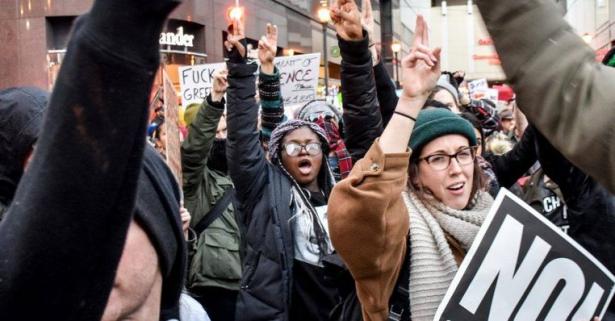Biden has narrowly won the most consequential election since 1860, a referendum on race, racism, inequality and authoritarianism amidst a raging pandemic.
In the last four years, the Republicans have moved farther right led by Trump, and Democrats have moved leftwards under the influence of Black Lives Matter, Bernie, Elizabeth and the left. Yet the presidential outcome was almost a duplicate of the 2016 election, but this time the decisive battleground states went narrowly for Biden instead of Trump. And who will control the Senate has not even been decided: Georgia voters will determine it in two runoff elections. Republicans made small gains in the House and in state legislatures.
The country remains virtually evenly divided and thoroughly polarized. We have a long and tough fight against the racist rightwing and for social justice ahead of us, starting with the Georgia run-offs.
Here are the highlights of a preliminary analysis of the only national exit poll, available on all major news and political websites.
- Despite Trump’s outrageous voter suppression campaign and the still raging Covid-19 crisis, voters of color bravely turned out in unprecedented numbers, raising their share of the electorate from 29% to 35%. Defying the media and pollster drumbeat that many would turn to Trump, they voted 72% for Biden, virtually the same as their vote for Clinton. Latinos increased their share of the vote from 9% to 11%. Voters of color were the key to Biden’s victory.
- Virtually all pre-election polls and surveys predicted that large numbers of white women, white suburbanites and white retirees would desert Trump and give the Democrats a big victory. Instead, the white electorate voted for Trump in the same percentage as 2016 (57%).
- White women actually slightly increased their vote for Trump compared to 2016 (55% v. 52%) and white men voted slightly lighter for him (58% v. 62%).
- Lower and moderate income voters went more strongly for the Democrats than in 2016. Voters from families making less than $50,000 per year went for Biden 57% compared to Clinton 53%. Voters from families making $50-100,000 increased their share of the electorate (38% v. 30%) and this time went for Biden by 56% rather than Trump (49% in 2016).
- Voters from families making more than $100,000 were less of the electorate (28% v. 34% in 2016) and voted more heavily for Trump this time (54% v. 47% in 2016).
The slides have more detail.
Total 10 slides, click on the arrow in bottom bar to advance to next slide.
[Bob Wing has been an organizer and writer since 1968, and was the founding editor of ColorLines magazine and War Times/Tiempo de Guerras newspaper.]


Spread the word